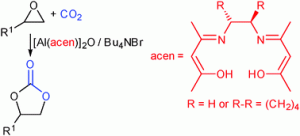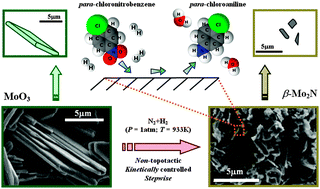 Wei-Ping Deng and colleagues from Shanghai in collaboration with John Fossey from the University of Birmingham have developed new chiral Cu complexes that catalyse the formation of 3-aryl glutamic acid derivatives in this Catalysis Science & Technology HOT Article.
Wei-Ping Deng and colleagues from Shanghai in collaboration with John Fossey from the University of Birmingham have developed new chiral Cu complexes that catalyse the formation of 3-aryl glutamic acid derivatives in this Catalysis Science & Technology HOT Article.
Glutamic acid and its derivatives are biologically important because they are essential components of peptides and proteins and also work as signal mediators.
The synthesis was carried out via catalytic asymmetric 1,4-addition reactions of glycine derivatives to
various alkylidene malonates with good yields and high stereoselectivities under the control of new N,O ligands.
Read more for free until 22nd March 2011
Novel N,O-Cu(OAc)2 complex catalysed diastereo- and enantioselective 1,4-addition of glycine derivatives to alkylidene malonates
Ming Wang, Yu-Hua Shi, Jun-Fei Luo, Wenting Du, Xiao-Xin Shi, John S. Fossey and Wei-Ping Deng
Catal. Sci. Technol, 2011, Advance Article
DOI: 10.1039/C0CY00001A, Paper















 Oxidative, photo-activated TiO2 nanoparticles in the catalytic acetylation of primary alcohols
Oxidative, photo-activated TiO2 nanoparticles in the catalytic acetylation of primary alcohols